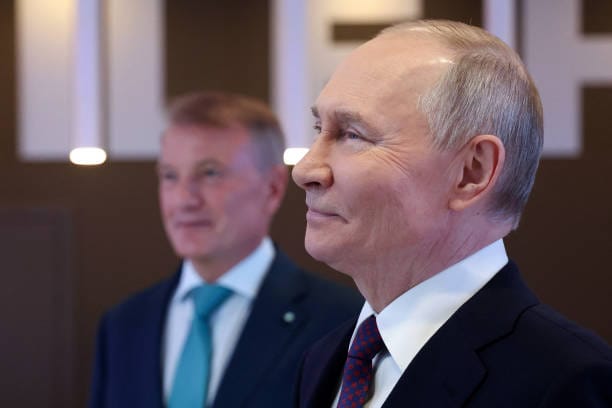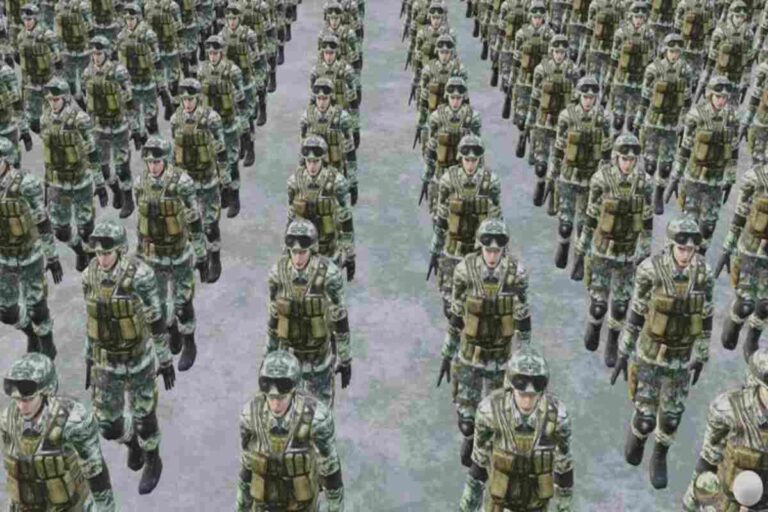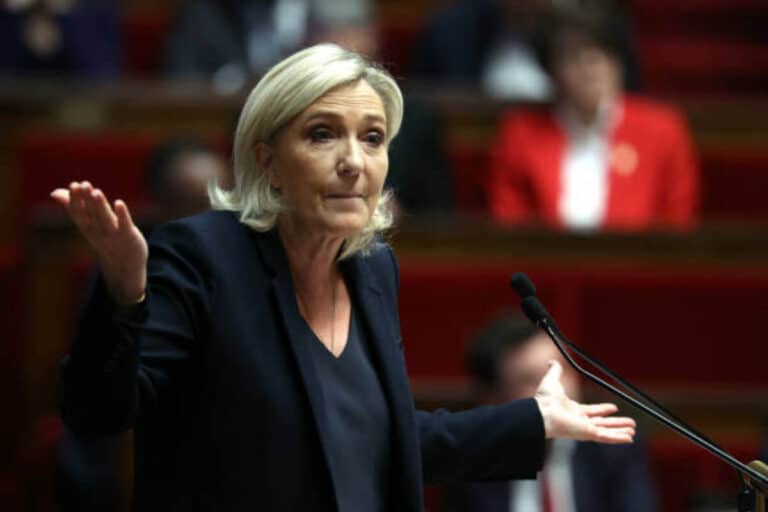

Russia's economy exhibits resilience with positive GDP growth and strong energy exports, despite facing significant challenges. (Photo by Alexander KAZAKOV / POOL / AFP) (Photo by ALEXANDER KAZAKOV/POOL/AFP via Getty Images)
Moscow (EPICSTORIAN) – In late December 2024, Russian economy exhibited signs of resilience, with key indicators suggesting a potential recovery despite ongoing challenges.
The nation’s GDP growth reached 4.7% in the first half of 2024, surpassing expectations and indicating a robust economic performance.
Inflation and Monetary Policy
Inflation remains a significant concern, with rates projected to be 9.2% to 9.3% in 2024, exceeding the Central Bank’s target of 8.5%. President Vladimir Putin has acknowledged the overheating economy and the adverse effects of high inflation on households, particularly due to soaring food prices.
In response, the Central Bank of Russia maintained its key interest rate at 21%, aiming to balance inflation control with economic growth. Governor Elvira Nabiullina emphasized the necessity of tight monetary policy to combat inflation, despite criticism from business leaders regarding high borrowing costs.
Labor Market and Economic Growth
The labor market presents both opportunities and challenges. While unemployment rates remain low, labor shortages are contributing to wage inflation, which, in turn, affects overall price levels. The economy’s overheating, driven by increased military spending, has led to higher consumer prices, impacting household budgets.
However, faced by these challenges, the economy has demonstrated resilience. The European Bank for Reconstruction and Development (EBRD) reported that Russia’s GDP increased by 4.7% in the first half of 2024, indicating a strong economic performance.
External Trade and Energy Exports
Russia’s energy sector continues to play a pivotal role in its economic recovery. In 2024, the European Union imported a record 16.5 million tonnes of Russian liquefied natural gas (LNG), despite efforts to reduce dependency on Russian energy sources. This increase in LNG imports underscores the competitiveness of Russian energy exports in the global market.
Challenges Ahead
Although with these positive indicators, the Russian economy yet faces several growth constraints. The ongoing conflict in Ukraine has led to increased military expenditures, contributing to inflationary pressures.
Additionally, Western sanctions continue to impact various sectors, including technology and finance, posing obstacles to sustained economic growth.
While the economic outlook hopefully shows signs of recovery with positive GDP growth and strong energy exports, experts advise holistic approaches to ‘helpful solutions’ , which include resolving issues of high inflation, labor shortages, and the effects of international sanctions to achieve long-term stability.
Russian Economy Lost 2023 Post-war Positive GDP Rate
Despite a reported GDP growth of 3.6% in 2023 and an expected 4% in 2024, Russia’s economy faces significant underlying issues. The surge in defense spending has led to an overheated economy, with inflationary pressures mounting from Ruble to dollar exchange rate drop, decline in the manufacturing sector’s productions etc.
Also Read: Pension Reform Fury: Russia Faces Unprecedented Nationwide Protests
Labor shortages, partly due to military mobilization as mentioned earlier, exacerbate wage inflation, while sanctions limit access to Western technology and capital. These factors raise concerns about the long-term sustainability.
The News Summary
- Despite inflation concerns and labor shortages, Russia’s economy shows resilience with strong GDP growth and energy exports.
- High inflation and military spending challenge Russia’s economic stability, but GDP growth indicates potential recovery.
- Russia’s economic resilience amid sanctions and labor shortages hinges on controlling inflation and stabilizing growth.






